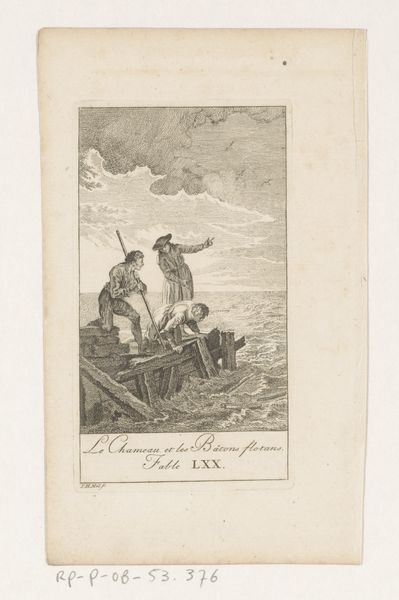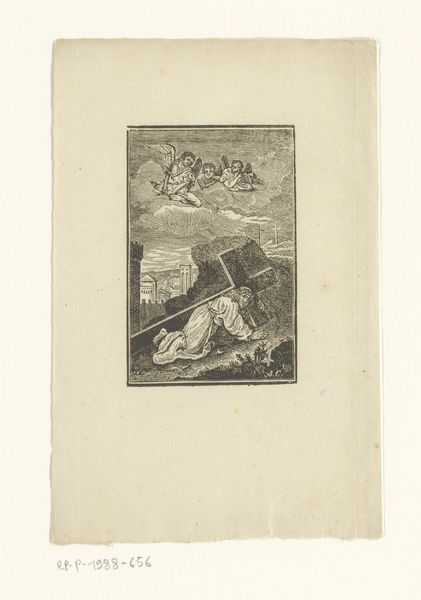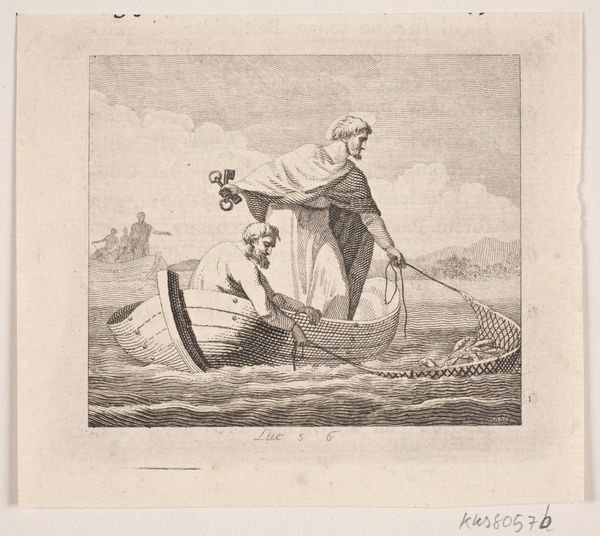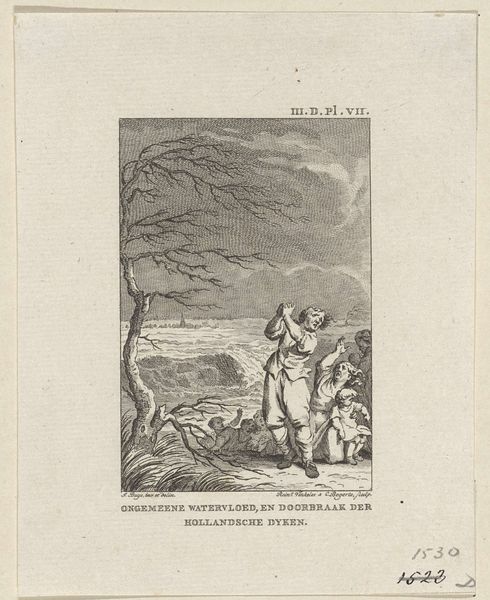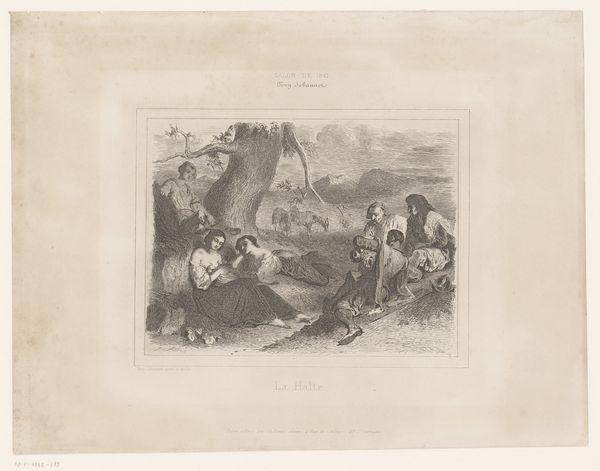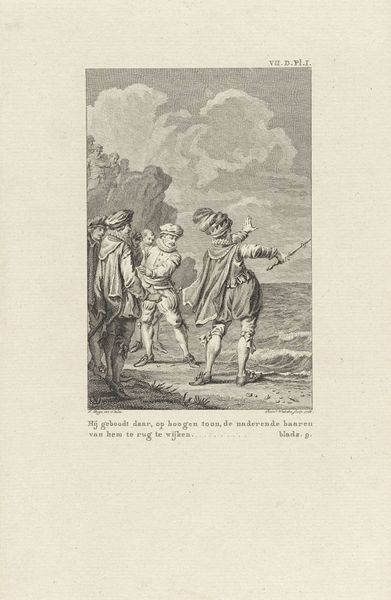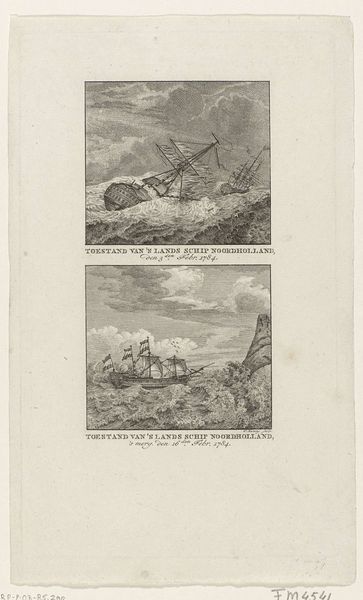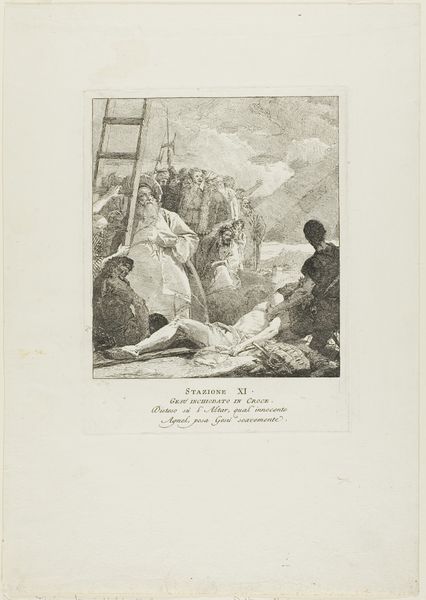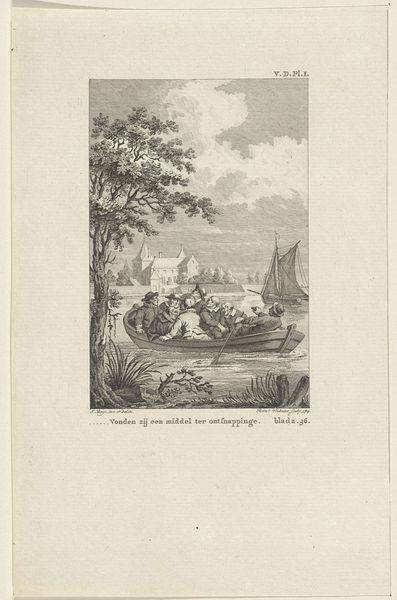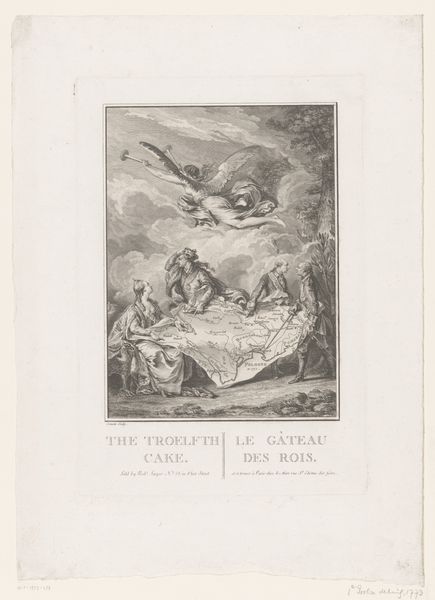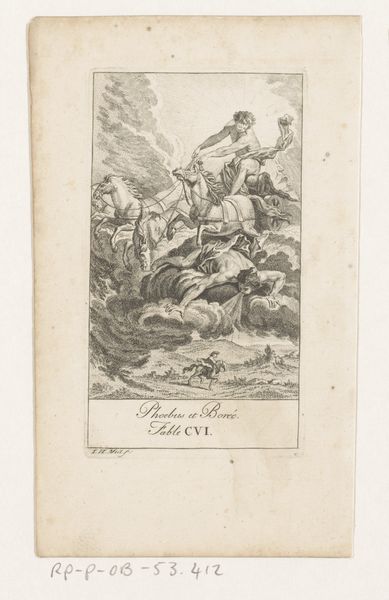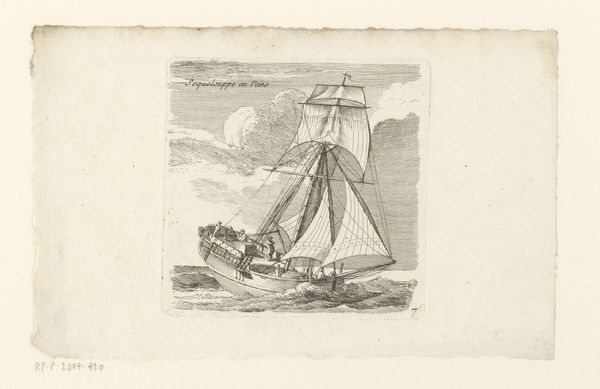
Dimensions: height 161 mm, width 116 mm
Copyright: Rijks Museum: Open Domain
Editor: This etching from 1776, titled "Fabel van de kameel en de drijvende stokken," attributed to Bertin, depicts three figures amidst a stormy seascape. The linear quality and detail are striking, almost photographic in their realism. What do you see when you look at this piece? Curator: For me, this piece is fundamentally about labor and resourcefulness within a specific socio-economic context. The figures are working with wood amidst turbulent seas. Look closely at the rough textures. This evokes the physical hardship inherent in their work and suggests the type of labor present at this historical time. What tools were used, how were they acquired, and what was the process of creation? Those are the more interesting questions that help us contextualize the narrative that unfolds. Editor: So, the social conditions of production are as important as the subject being depicted? Curator: Absolutely! These weren't luxury items; prints like this served to communicate specific messages to a broad audience. By understanding the etching process, the type of paper used, and the dissemination methods, we can understand the function and impact of this image and understand this genre of ‘print’ in society. The choice to depict manual labor, especially amidst nature’s power, likely aimed to resonate with contemporary social and economic anxieties. Editor: That’s fascinating, it really shifts my perspective. I was focusing on the ‘story’ of men and a camel! Now, the material aspect really strengthens that message. Curator: Exactly. Think about what the existence of 'line' entails... it is material, graphic, physical... it comes from somewhere. When you think like that, this artwork can say much more! Editor: I'll never see art the same way again! Thanks.
Comments
No comments
Be the first to comment and join the conversation on the ultimate creative platform.
